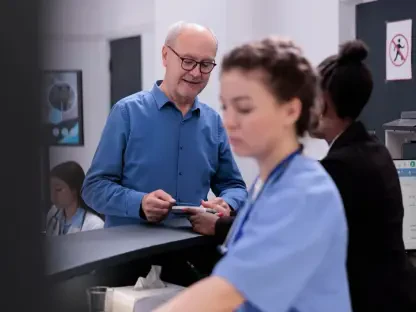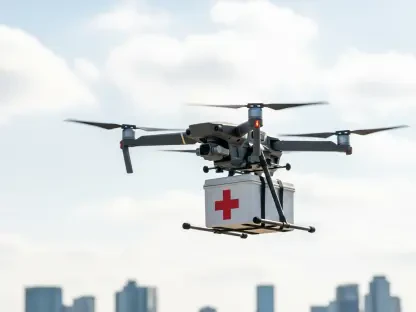Faisal Zain is a reputed healthcare expert whose deep dive into medical technology provides unique insights into the challenges and innovations shaping the landscape of healthcare today. With extensive expertise in manufacturing medical devices for diagnostics and treatment, Faisal has continuously driven technological advancements in the field. This interview explores themes such as the complexities of healthcare marketing, the impact of public relations in healthcare programs, and the hurdles faced by major corporations in their outreach efforts.
What were the main challenges Georgia faced in implementing the Medicaid work requirement program, and why was PR considered a critical component for its success?
Georgia’s Medicaid work requirement program confronted several hurdles, primarily due to the complexity of the initiative itself and the challenge of reaching and engaging eligible residents. The concept demanded not only healthcare accessibility but also fulfillment of work conditions, making it crucial to communicate clearly and persuasively with the public. PR was essential because it served to clarify objectives, dispel misconceptions, and foster participation, amidst the skepticism and confusion surrounding such a novel approach.
How did Deloitte Consulting secure the $10.7 million marketing contract for the Georgia Pathways program?
Deloitte Consulting’s established relationship with Georgia, having already managed and built the Pathways system, paved the way for securing the marketing contract. Their involvement from the inception of the program positioned them as a trusted party capable of executing a comprehensive marketing campaign, despite an unusual setting where such initiatives typically see collaboration with non-profit organizations rather than a for-profit entity like Deloitte.
Can you break down the key areas where the marketing budget was allocated?
The budget allocation primarily focused on media outreach and direct community engagement. Significant funds were invested in TV and radio ads, aiming to capture large audiences during popular broadcast slots like NFL games. Another considerable portion was dedicated to deploying teams trained by Deloitte to actively distribute brochures and merchandise, striving to foster awareness directly at community events and gatherings.
Why did enrollment in the Pathways program remain below 3% despite the extensive marketing efforts?
Despite extensive outreach, enrollment lagged due to persistent barriers within the program structure itself, such as the work requirement which potentially alienated eligible individuals who struggled to meet these conditions. Compounded by issues of trust between disadvantaged communities and government initiatives, the marketing efforts did not sufficiently address or overcome these fundamental disconnects.
What factors contribute to the lack of public accountability for Deloitte’s efforts to increase enrollment?
The lack of transparency surrounding Deloitte’s performance metrics and outcomes is a key factor. Contracts and reports designated as “confidential/trade secret” prevent a thorough public understanding and assessment of their efficacy. Additionally, no specific enrollment targets were set in the contracts, which may have hindered clear accountability.
How does Deloitte’s involvement in both managing and marketing the Pathways program differ from how states typically engage local nonprofits for such tasks?
Deloitte’s dual role deviates from the norm, as states often utilize local nonprofits for marketing and outreach due to their established community ties and credibility. This divergence raises concerns about the disconnect that might exist between a large corporate entity and the nuanced, community-focused approach nonprofit organizations can offer.
What specific metrics or goals were outlined, if any, in the marketing contract to measure Deloitte’s success?
Interestingly, the marketing contract did not outline specific enrollment targets or metrics defining success criteria, which is quite unconventional for initiatives aiming to increase public program participation. Instead, success seemed to be measured by broad engagement strategies rather than tangible enrollment outcomes.
What is the rationale behind Georgia not setting specific enrollment targets in their contract with Deloitte?
There may be an intention to emphasize awareness and presence over quantitative enrolment figures, echoing broader strategic goals that prioritize informing the public rather than merely increasing numbers. This rationale could reflect an expectation that engagement leads eventually to compliance and enrollment.
Why has the state approved an additional $10 million contract for Deloitte’s marketing efforts, and what new approaches will this include?
Despite challenges faced thus far, Georgia appears committed to recalibrating and enhancing its outreach, demonstrated by the approval of additional funding. The renewed focus will incorporate strategies like text messaging campaigns and more frequent community meetings, suggesting an effort to intensify direct communication and perhaps address previous shortcomings.
Could you elaborate on the differences in approach between Georgia’s Pathways and North Carolina’s Medicaid expansion strategy?
North Carolina’s approach, commended for leveraging community input in outreach strategies, starkly contrasts with Georgia’s top-down, consultant-driven method. By engaging locals in campaign creation, North Carolina forged deeper connections and rapidly increased enrollment, demonstrating the effectiveness of community-based models over centralized strategies in certain contexts.
How did the testimonial video campaign perform, and why was only one video produced?
The video campaign fell short, exemplified by the minimal output and low engagement with the single creation. Limited production and dissemination could stem from ineffective planning or resource allocation that underestimated video media’s potential reach and influence in fostering personal connections and endorsements.
What were the outcomes of Deloitte’s PR teams attending community events like farmers markets and health fairs?
The presence of PR teams at community events aimed to boost local engagement but seemed to yield limited success. The anecdotal evidence of disengaged team members suggests missed opportunities for meaningful interaction and persuasion, underscoring important lessons about approach and execution in community-centric marketing.
Can you explain the process and challenges involved in extending the Pathways program beyond its original five-year mandate?
Extending the program involves comprehensive negotiation and documentation with federal authorities, requiring public comment sessions and evaluations. This complex process also demands overcoming critiques about accessibility and efficacy in reaching vulnerable populations. Success depends largely on improving trust and operational elements.
What has been the response from community advocacy groups regarding the Pathways program and its outreach efforts?
Community advocacy groups have generally expressed concern over superficial outreach and questioned the program’s effectiveness in serving marginalized communities. There’s a call for deeper engagements and more responsive mechanisms to address systemic disparities impeding the program’s reach and success.
How did the state ensure public participation and comment during the application to extend the Pathways program?
The public participation process faced challenges, with obscure notice postings limiting visibility and attendance. While the framework for engagement existed, the execution lacked accessibility and inclusiveness, pointing to areas needing significant improvement to genuinely capture community feedback.
What technical issues did applicants like Tanisha Corporal face with the Deloitte-built digital portal, and how were these issues addressed?
Applicants faced technical glitches such as disappearing files and lack of support, which complicate the enrollment process significantly. Addressing these issues effectively calls for system improvements, user-friendly interfaces, and robust customer assistance mechanisms to rectify procedural breakdowns and improve user experience.
How did the state’s presentation and response during public meetings reflect its commitment to addressing community concerns?
The state officials’ participation in public meetings revealed opportunities to enhance dialogue and responsiveness. Attendees felt their concerns were not adequately engaged, indicating the need for a more interactive approach where community voice is genuinely heard and considered.
Why was there low attendance at some public meetings, and how could future meetings be improved to increase participation?
Low attendance was attributed to location convenience, timing, and inadequate outreach. Future improvements could encompass broader announcements, more accessible venues, and leveraging digital tools for remote participation, ensuring comprehensive community involvement and feedback.
What lessons can other states learn from Georgia’s experience with the Medicaid work requirement program and Deloitte’s role in it?
Other states could learn from Georgia’s experience by prioritizing clear targets, transparency, and fostering deeper connections with trusted community partners. Streamlining communication and understanding local nuances can greatly enhance participation and trust in public programs.
For how long has Deloitte been involved with the Pathways program, and what are their future plans concerning it?
Deloitte has been integral to the Pathways program for over three years, with plans for continued involvement heightened by recent funding to refine and expand marketing efforts. Their future trajectory will likely focus on optimizing strategies, improving outcomes, and adapting to evolving program goals.









